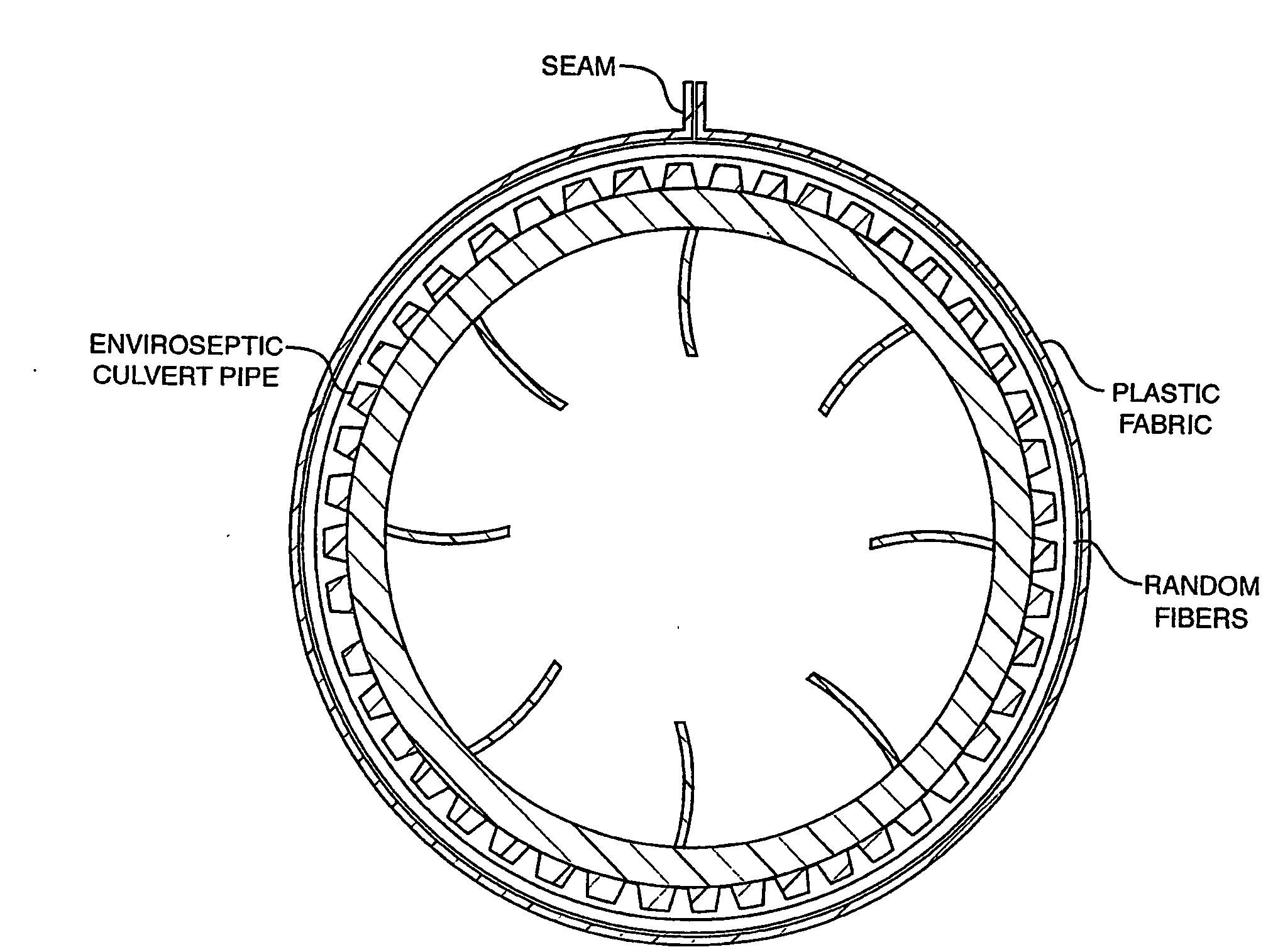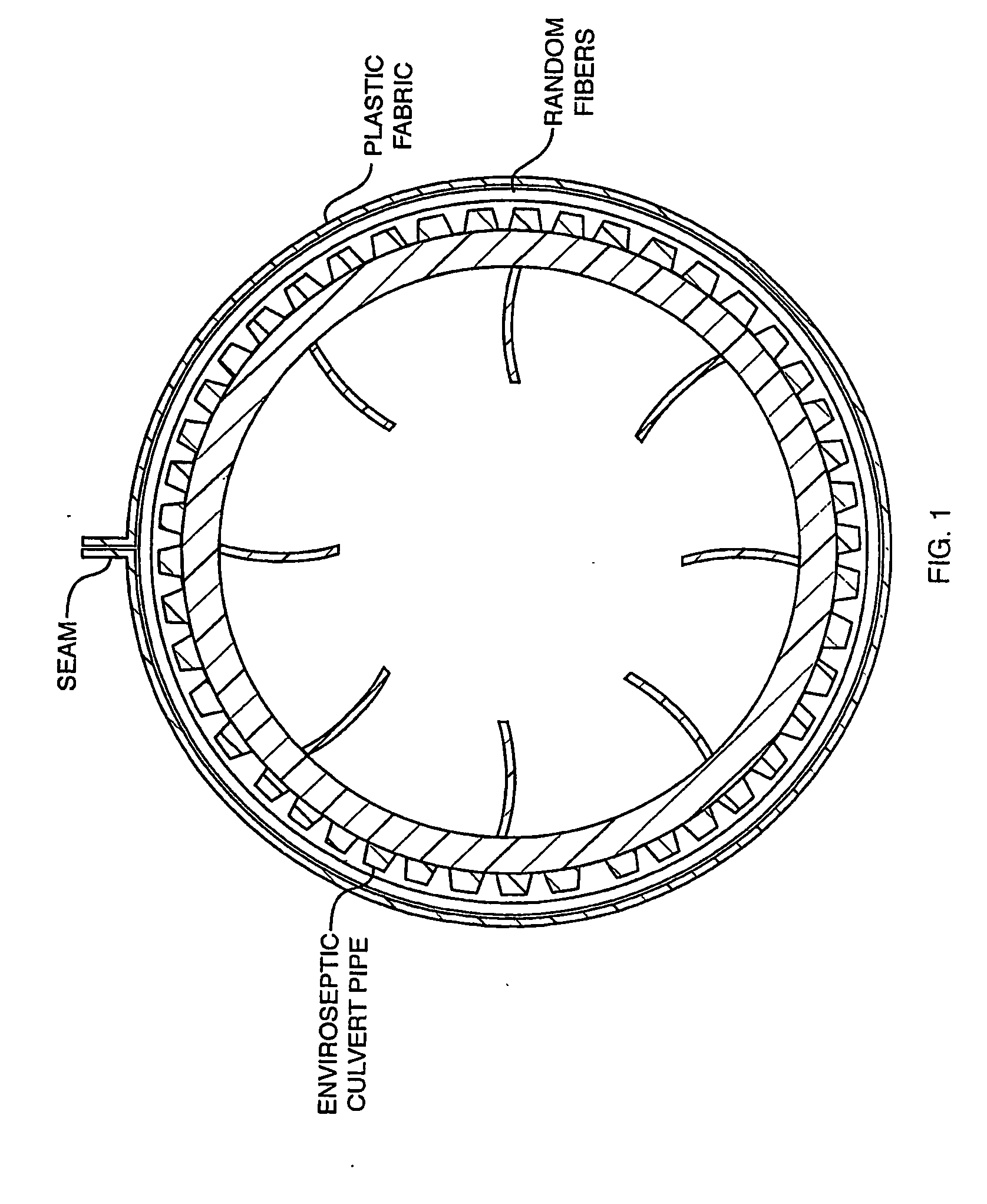Fluid Conduit with Layered and Partial Covering Material Thereon
a technology of flue gas conduit and layered material, which is applied in the direction of sewage draining, filtration separation, separation process, etc., can solve the problems of lint and fuzz, the septic tank generally available does not effectively provide for the removal, and the solids that pass through the tank neither cool nor make contact at a slow enough pace to separate from the water, etc., to achieve the effect of reducing the amount of effluent, reducing the amount of solid
- Summary
- Abstract
- Description
- Claims
- Application Information
AI Technical Summary
Benefits of technology
Problems solved by technology
Method used
Image
Examples
Embodiment Construction
[0077]The following is a description of the preferred embodiment of the invention. It is clear that there may be variations in the size and the shape of the apparatus, in the materials used in the construction and in the orientation of the components. However, the main features are consistent and are;
[0078]1) Multiple layers of fabric rather than screens;
[0079]2) Fabric layers of varying deniers and / or thickness;
[0080]3) Useful in wrapping smooth-walled and corrugated plastic pipe;
[0081]4) With the selection of fabric and fabric denier, specific fluid treatment objectives can be met;
[0082]5) The multilayer fabric provides boundaries / interfaces and regions within which specifically chosen bacteria, chemicals, microbes and the like may be introduced to facilitate the biodegradation of specifically chosen undesirable materials; and
[0083]6) Improve performance over the currently known leach fields.
[0084]7) One of the most particular features of this newly disclosed invention is now desc...
PUM
| Property | Measurement | Unit |
|---|---|---|
| circumference | aaaaa | aaaaa |
| shape | aaaaa | aaaaa |
| surface area | aaaaa | aaaaa |
Abstract
Description
Claims
Application Information
 Login to View More
Login to View More - R&D
- Intellectual Property
- Life Sciences
- Materials
- Tech Scout
- Unparalleled Data Quality
- Higher Quality Content
- 60% Fewer Hallucinations
Browse by: Latest US Patents, China's latest patents, Technical Efficacy Thesaurus, Application Domain, Technology Topic, Popular Technical Reports.
© 2025 PatSnap. All rights reserved.Legal|Privacy policy|Modern Slavery Act Transparency Statement|Sitemap|About US| Contact US: help@patsnap.com



